LeJour Chronograph 7733: The Poor/Smart Man’s Chronographe du Jour
By Henry Margenau
In my collecting travels, online and otherwise, I’ve observed two camps of watch collectors (well, at least in this binary I’m about to lay down): those who enjoy complications and those who don’t. I was actually surprised that there seemed to be a sizeable segment of the #watchfam who were put off by chronographs and, instead, vied for simpler time-only pieces.
I mean, I get it.
Chronograph dials can be very busy and, at worst, oddly balanced aesthetically. Many of us don’t really NEED them (to the same degree that we don’t really NEED any watches). Many of us are not racing cars or timing engine burns or the distance of artillery shells. And then there’s the cost of ownership. Whether you take the side of “a service every five years” or “if it ain’t broke…,” at some point, your watches are going to need some attention. A regular service can already cost you a good chunk of change and, if you have your watchmaker taking apart, cleaning, and oiling a complicated chronograph movement, it can run you into the red.
On top of that, some of us are crazy enough to own vintage chronographs. I wrote a piece about my 1970 Seiko 6139-7000 Speedtimer chronograph a few months ago for the Snobs and, if you’re TL;DR, the piece ended with an anecdote about how I dropped the thing right on the pushers in the first few weeks after receiving it and had to get it serviced. Yikes, indeed.
But, alas, chronographs are just cool. What can I say? They’re interesting to look at. They come in colors, colors, colors. With contrasting or matching sub-dials (with contrasting or matching hands)! And buttons! Did I mention, buttons! Shiny, candy-like, buttons! Who doesn’t love pressing a good button and having it do a thing?
So, while I’m not racing (car sick), running from mortars (pacifist/out of shape), or timing engine burns (plane/spaceship sick), I can still find practical applications for my chronographs (just like my dive bezels!). I don’t need to use my iPhone to time things I’m cooking. I’ve got a Speedtimer! And, for the most part, my chronographs run efficiently and without much trouble (though they do require a bit more know-how to get the best out of the movements).
Funny enough, the chronograph I own that has given me the least trouble is even older than the Seiko. It has a more complicated movement. It’s vintage in every sense of the word and, at times, I feel like I might break the damn thing just from using the pushers. However, it’s solid. I don’t worry about it and am not sure if I ever will. To boot, it’s connected to (I think) one of the biggest names in watchmaking. And I’d find out for sure for you if the S.O.B.’s ever return my e-mail inquiry about it (Editor’s Unhelpful Note: Henry, I’d like to officially welcome you to the Two Broke Watch Snobs editorial team where no one ever returns your emails).
The darling little chrono I’m referring to is my 1960’s LeJour reverse panda dial chronograph. From what I’ve gathered, LeJour was a French watch company started in the 1960’s which made mechanical watches and chronographs and was a distributor for Yema, another smaller Swiss brand, in the United States. Both LeJour and Yema still exist and they are both still producing watches that hearken back to their brand heritages, though the ownership of the companies have changed hands (a few times, I believe, in LeJour’s case) and they’re really not the same as they were. Kaz and Mike covered some of this history in TBWS Podcast episode #96, the “Hong Kong Watch and Clock Fair 2018 Megasode,” so I won’t rehash the complete story of LeJour here. It’s interesting, though, and I’d recommend listening to the episode and reading more about it online (Gnomon Watches has some interesting brand history as well).
Perhaps the most well-known vintage LeJour chronographs are the broad arrow (which you can see here) and a Valjoux 7750 chronograph which is regarded as a poor man’s Heuer Pasadena. According to an article from On the Dash, Heuer made some watches for LeJour in the 1970’s or 80’s which LeJour then distributed. LeJour recently came out with the Mark I 001, a new watch that hearkens back to the legacy of the above-mentioned chronograph (so much so, that the Mark I still uses a Valjoux 7750). Ilya from Worn and Wound wrote a comprehensive review of the Mark I which talks a bit about this lineage (and, again, our hosts at TBWS mention it on the “Megasode”).
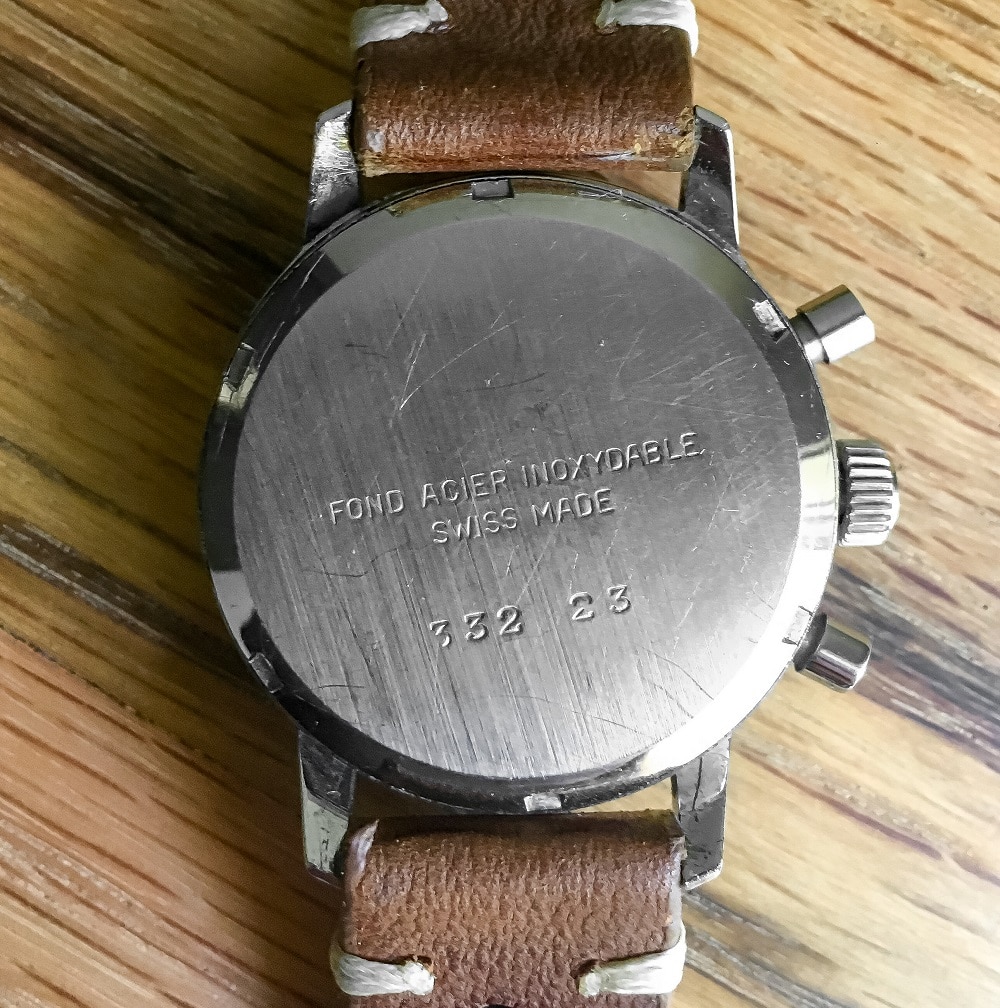
As far as my watch goes, I’m not sure exactly what particular year it’s from, but I can tell by the “T Swiss T” at six o’clock that it has to be the latter part of the 60’s (that’s when they stopped using radium and switched over to tritium lume). And it’s kind of amazing in a lot of ways. The sub-dials are more champagne than pure white with lovely concentric guilloche circles.
The hands on the sub-dials are unique and mismatched. The lume pips around the chapter ring have aged to a creamy color. The dial itself is tropical (if you see it in the right light) and is turning a warm brown hue. The Arabic numerals are applied and have a neat, squared off, mid-century sensibility about them. The pushers still have some snap and life in them and reset perfectly to zero every time.
The case finishing is more function than form. Well done, but not overly adorned. It’s reminiscent, to me, of the Plain Jane charm of something like a vintage Omega Geneve: no frills, no problem. The case size is 36mm with 18mm lugs, a sweet spot in my humble opinion, for any watch. Even vintage divers at this size (and below!) are awesome (trust me). The watch sits a bit high on the wrist at 12-13mm thick (forgive me; I don’t have calipers; I know, I know).
Some people get really wound up (pun intended) about case thickness; watches that sit up high on the wrist are seen as bulky at best and impractical at worst, mostly since they won’t fit comfortably under a cuff. Personally, I think that’s true more of watches that are this thick but also more in the 42-44mm width. The LeJour is a bit tall and a bit bulky but, because of its smaller width, can stay comfortably under the shirt sleeve. And I think the chunkiness gives an otherwise smaller vintage watch a bit of substance and heft which keeps the idea of it as a tool watch fresh in my mind as I wear it.
My LeJour chrono is powered by an older movement, the revered Valjoux 7733 movement, a dependable Swiss hand-wind cam-lever movement (and descendent of the Venus 188) that was put into a number of vintage chronographs in the mid 20th Century. This was common practice back in that time that we affectionately refer to as “the day.”
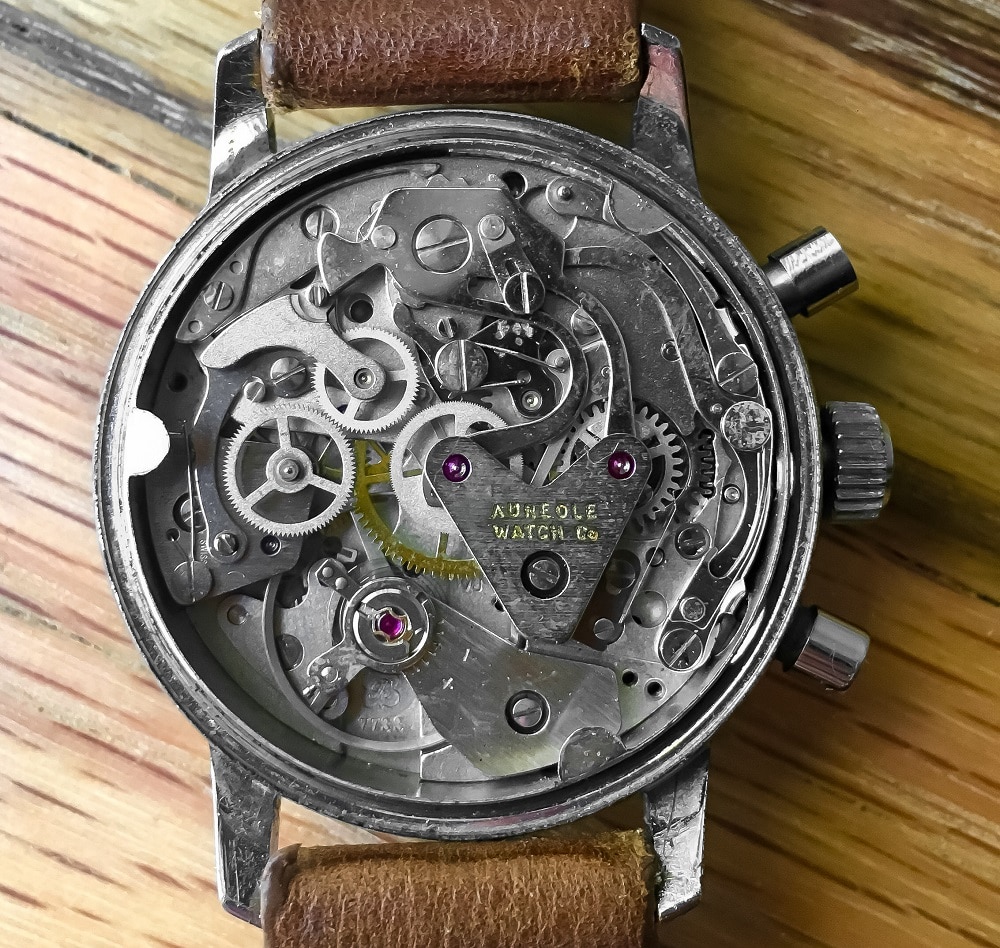
Who do you ask?
Breitling! Yes, the makers of the famous Navitimer! Yes, the aforementioned SOB’s who don’t return e-mails. I reached out to the company because, while intially researching my LeJour purchase, I found a Breitling that resembled my watch more than any of the other smaller branded watches. The watch is the Breitling 9121, a dual register chronograph with the same reverse panda dial, numerals, pump pushers, case, and movement but with different numbering on the sub-registers. So, barring additional information from Breitling themselves, there’s a good chance I may have gotten a lot more watch than I paid for.
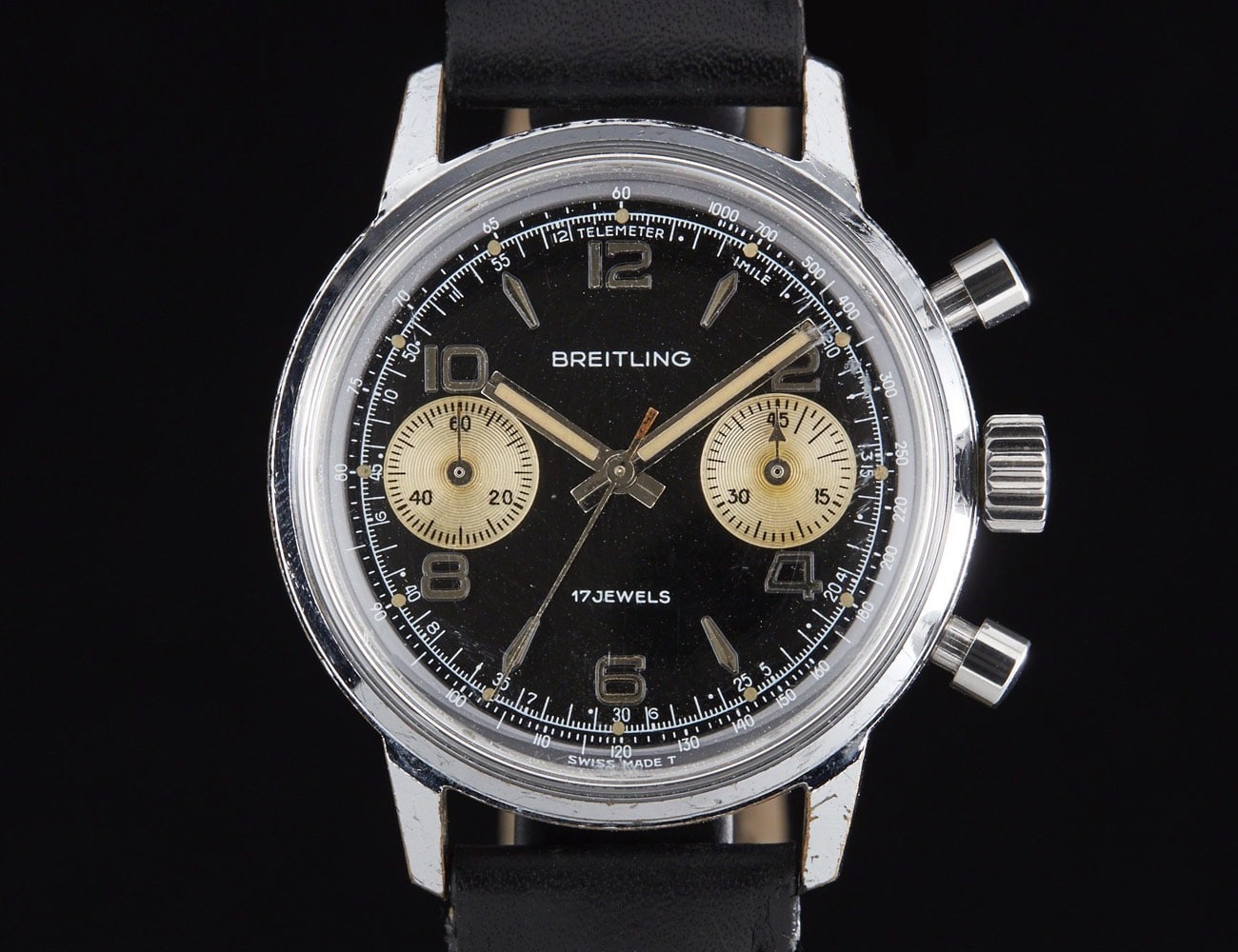
I petition you to do some research on some of the smaller, quirkier, and nearly disappeared brands of the past, especially the 1950’s to the 1970’s. If you’re not hung up on brand names and provenance (with a capital P), I’m confident that your searching will turn up rich results. I’m consistently on the hunt for vintage chronographs from these smaller brands, not just because they’re more attainable than their luxury brand siblings, but because they are interesting, rare, varied in their aesthetics and, since they share so much DNA with some of the great Swiss watch brands, I feel like I’ve really done my homework and made a smart purchase at a great value.
And if I drop one, fuck it. At least it’s not getting serviced at Breitling prices.

Henry is a scholarly watch nerd based out of northern New Jersey. He works as a professor of composition and creative writing by day and a fiction writer by night. Both his academic and creative work have given him insight on design and rhetoric and his fiction writing background influences his humorous, narrative take on watch reviews. His watch collecting habits tend to lean toward vintage, but he never shies away from unique and interesting new pieces. Henry is also an avid musician, record collector, whiskey aficionado, serial hobbyist, and all-around enthusiast.
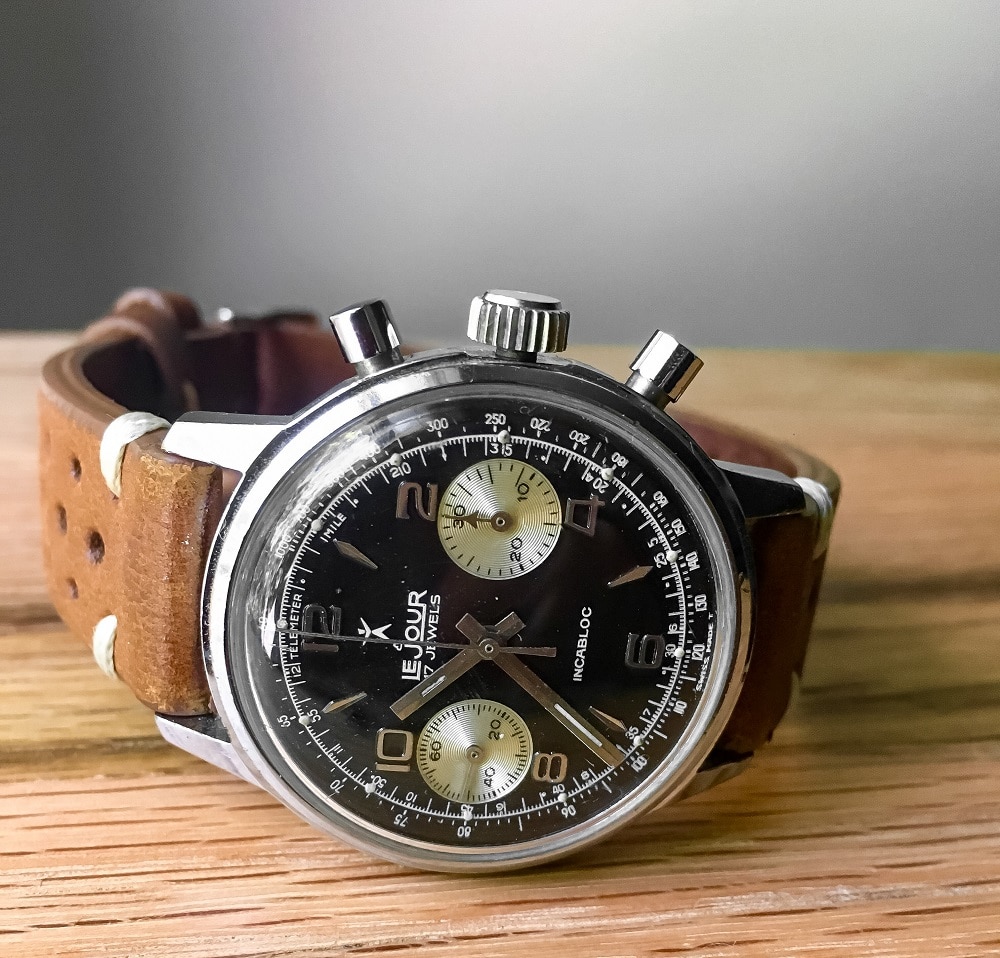

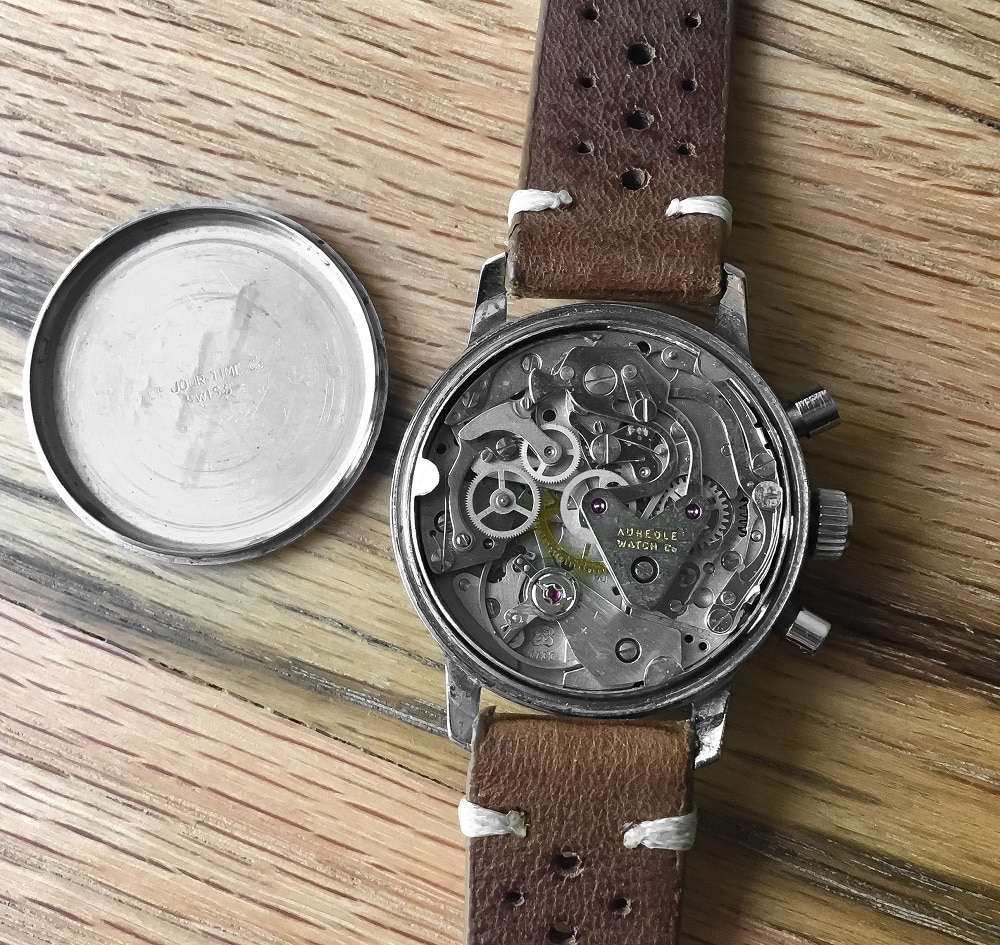
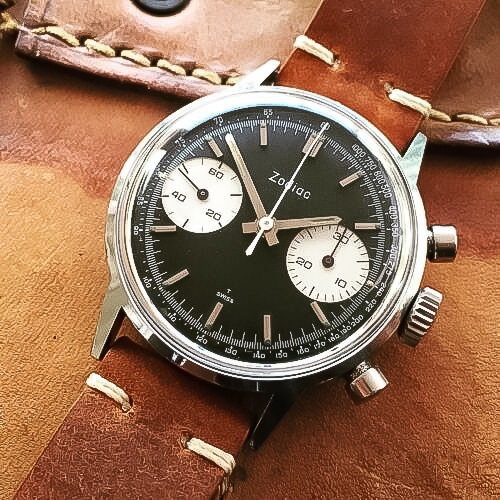
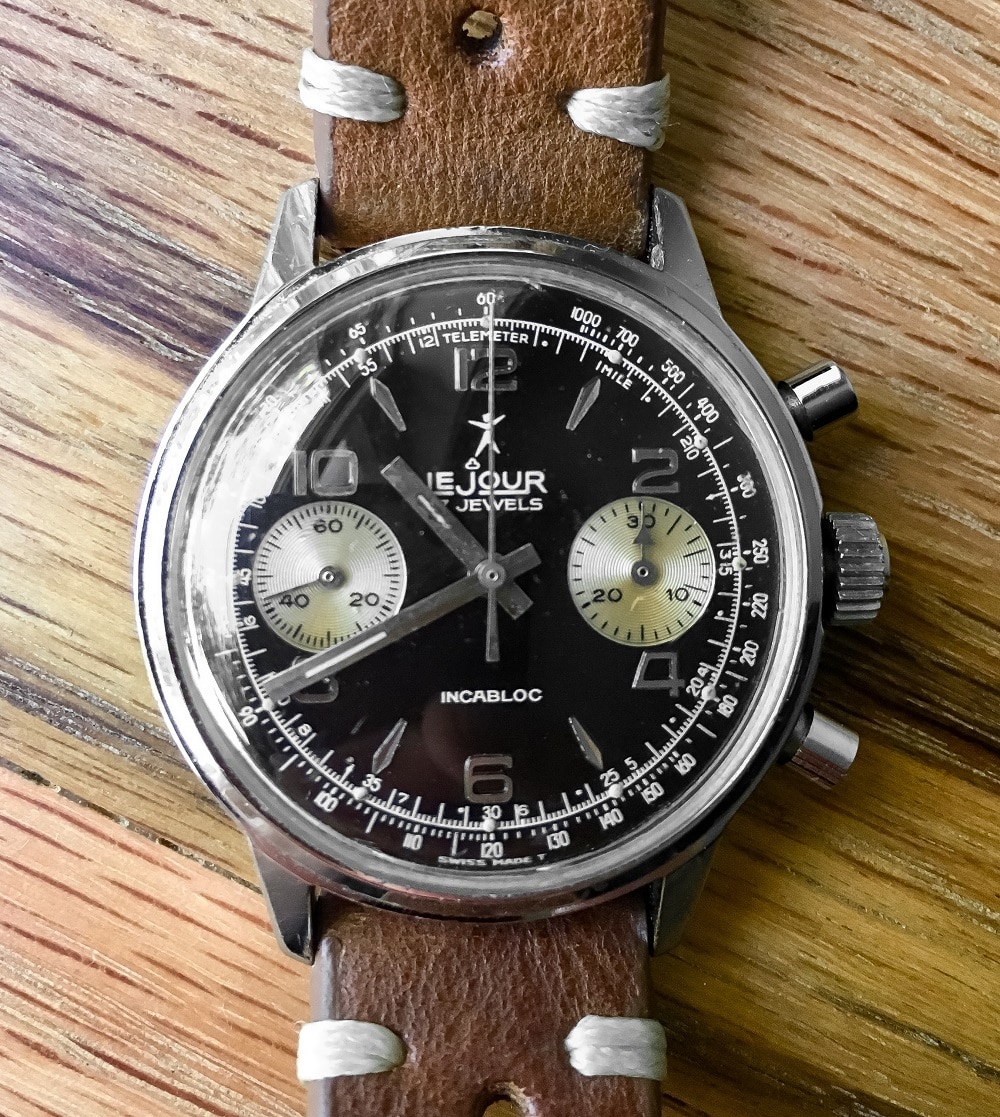

Excellent article. I’m also into vintage chronographs and my collections is mostly based around 6138/6139 from Seiko (+ 3133/31659 Soviet chronos), but I’ve been eyeing some LeJour pieces as well. I guess this will be my next acquisition before prices shoot up!
A few years ago, I think I might have snagged a chronograph from one of those “nearly disappeared” brands you mention. The dial says “Fortress” and the movement is a Landeron 48. That’s about all I know about it, can’t seem to find much information about that brand.
Thanks for the kind words on the article, Vintage Watch Inc.! Vintage Seiko chronos are also great pieces and highly collectable. I have a few myself. Glad you enjoyed the piece!
Thanks for your comment also, Garret! I’d love to see your chronograph. It’s true that these small brands are sometimes nearly impossible to track down, especially since they partnered with bigger houses that are still around.
One year later I finally acquired by first LeJour chronograph: “Pasadena” dial in a stainless steel case, powered by a 7750. Can’t wait to receive it.
I have one with a very similar dial, but with a rotating bezel!
Really? I think the LeJour would look amazing with a bezel on it.
I have a Le Jour with a 7733 movement (marked J. P. Pingouin Co. ) that is in bad need of servicing and crystal replacement but it seems senseless to spend more than the watch is worth just to get it running.
Yeah. That’s a hard call to make. These movements are great, but they were also mass produced so you could perhaps find another watch with one under the hood instead of shelling out to service it.
I have this watch le jour but the dial say “isomax”. A gift from my grandfather to my father in 1969. It’s working perfect without service!
I have in my possession most likely the finest example of a Lejour. I bought this watch in 1974 as a young lad and loved this watch so much that I only wore it on the utmost special occasions. That being said I have probably only worn this watch a total of ten times in the 50 years i have owned it. It is in brand new condition with the original packing and boxes and papers. It is a 3 register chronograph with the rotating bezel and I still can remember the day I bought it.
Enjoyed your article on the reverse pandas. I have the exact Breitling 9121 with the Valjoux 7733 movement. Great watch that I purchased new late in1972.